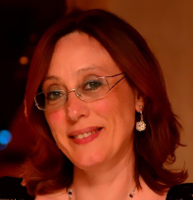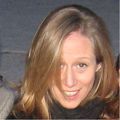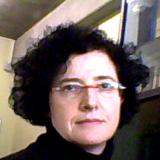Studying at the University of Verona
Here you can find information on the organisational aspects of the Programme, lecture timetables, learning activities and useful contact details for your time at the University, from enrolment to graduation.
Academic calendar
The academic calendar shows the deadlines and scheduled events that are relevant to students, teaching and technical-administrative staff of the University. Public holidays and University closures are also indicated. The academic year normally begins on 1 October each year and ends on 30 September of the following year.
Course calendar
The Academic Calendar sets out the degree programme lecture and exam timetables, as well as the relevant university closure dates..
| Period | From | To |
|---|---|---|
| 1° Semestre | Oct 1, 2023 | Jan 31, 2024 |
| 2° Semestre | Mar 1, 2024 | Jun 30, 2024 |
Exam calendar
To view all the exam sessions available, please use the Exam dashboard on ESSE3. If you forgot your login details or have problems logging in, please contact the relevant IT HelpDesk, or check the login details recovery web page.
Should you have any doubts or questions, please check the Enrollment FAQs
Academic staff
 denise.lovison@univr.it
denise.lovison@univr.it
Study Plan
The Study Plan includes all modules, teaching and learning activities that each student will need to undertake during their time at the University.
Please select your Study Plan based on your enrollment year.
1° Year
| Modules | Credits | TAF | SSD |
|---|
2° Year It will be activated in the A.Y. 2024/2025
| Modules | Credits | TAF | SSD |
|---|
3° Year It will be activated in the A.Y. 2025/2026
| Modules | Credits | TAF | SSD |
|---|
4° Year It will be activated in the A.Y. 2026/2027
| Modules | Credits | TAF | SSD |
|---|
5° Year It will be activated in the A.Y. 2027/2028
| Modules | Credits | TAF | SSD |
|---|
| Modules | Credits | TAF | SSD |
|---|
| Modules | Credits | TAF | SSD |
|---|
| Modules | Credits | TAF | SSD |
|---|
| Modules | Credits | TAF | SSD |
|---|
| Modules | Credits | TAF | SSD |
|---|
| Modules | Credits | TAF | SSD |
|---|
Legend | Type of training activity (TTA)
TAF (Type of Educational Activity) All courses and activities are classified into different types of educational activities, indicated by a letter.
General and inorganic chemistry (2023/2024)
Teaching code
4S010785
Academic staff
Coordinator
Credits
9
Language
Italian
Scientific Disciplinary Sector (SSD)
CHIM/03 - GENERAL AND INORGANIC CHEMISTRY
Period
1° Semestre dal Oct 1, 2023 al Jan 31, 2024.
Courses Single
Not Authorized
Learning objectives
At the end of the course the student will be able to solve problems of various complexity concerning General Chemistry. The course also aims to provide the student with an adequate level of culture to profitably deal with subsequent courses such as Organic Chemistry (2nd year), Drug Analysis I (2nd year) and General Biochemistry (2nd year).
The student will be able to understand the basic properties of matter from an electronic, structural and chemical reactivity point of view.
The student must be able to apply this knowledge at the molecular level in the study of new drugs or health products in a defined biological system.
Prerequisites and basic notions
Basic mathematical knowledge
Program
BASIC CONCEPTS • States of aggregation of matter. • Elementary substances and compounds. • Homogeneous and heterogeneous mixtures • Atomic number, mass number, isotopes, atomic mass. • Molecules: formulas, molecular mass. • Ions. • Mole, Avogadro constant, molar mass. • Chemical reactions: classification, formalisms and balancing. THE ATOM • Electromagnetic radiation and subatomic particles. • Atomic theories: Bohr theory and quantum mechanical theory, quantum numbers, atomic orbitals, electronic and nuclear spin, diamagnetism, paramagnetism and ferromagnetism. • Structure of polyelectronic atoms, electronic configuration and electronic configuration of the outer shell (Aufbau principle). • Table of elements and periodic properties: size of atoms, ionization energy and electron affinity. THE CHEMICAL BOND • Ionic bond. • Covalent bond, symbology and Lewis structures, octet rule, resonance formulas, radicals. • Dative (or coordination) covalent bond; Lewis acids and bases. • Electronegativity, polarity of bonds. • Geometry and polarity of molecules. • Valence bond theory, hybridization theory and molecular orbital theory. • Metallic bonding, band theory, conductors and semiconductors. • Coordination compounds, nomenclature, coordination bond, electronic structure, geometry and isomers. INORGANIC COMPOUNDS • Oxidation number. • Systematics of inorganic compounds and nomenclature: hydracids, oxoacids, oxides, hydrides, acids, bases, hydroxides, salts. INTERMOLECULAR INTERACTIONS • Dipole-dipole interaction and hydrogen bonding. • Van der Waals forces. STATES OF AGGREGATION OF MATTER • Solid state: amorphous and crystalline solids. Notes on the properties of ionic, covalent, covalent macromolecular and metallic solids. • Liquid state: vapor pressure, surface tension, viscosity. • Gaseous state: ideal gas law, gas mixtures and partial pressures, real gases and van der Waals equation. • Phase transitions and state diagrams. THE SOLUTIONS • Definition of solvent and solute. • Miscibility of substances with reference to intermolecular interactions. • Solutions, concentration of solutions (molarity, molality, normality, mass/volume percentage, volume/volume percentage). • Electrolyte solutions. • Colligative properties of solutions: vapor pressure, capillarity, Raoult's law, variation of boiling and freezing points, osmotic pressure. HOW CHEMICAL TRANSFORMATIONS OCCUR • Principles of thermodynamics: definition of heat and work, internal energy (U), enthalpy (H), entropy (S), Gibbs free energy (G), spontaneity of chemical phenomena. • Chemical equilibrium: reaction quotient and equilibrium constant, equilibrium shift (Le Chatelier's principle) • Speed of chemical reactions, kinetic equations, reaction order and multi-step reactions. Collision theory, activation energy, catalysis. EQUILIBRIUM IN AQUEOUS SOLUTION • Definitions of acids and bases (Arrhenius, Brønsted-Lowry, Lewis). • Acidity/basicity of an aqueous solution: pH scale and methods for measuring pH. • Strong and weak acids, Ka and pKa, degree of dissociation. • Strong and weak bases, Kb and pKb. • Acid-base properties of salts. • Buffer solutions • Solubility and solubility product (Kps), precipitation reactions. • Stability constants of complex ions. ELECTROCHEMISTRY • Oxidation-reduction reactions. • Potential reduction standards. • Notes on electrochemical applications: voltaic cells and electrolysis. BASIC NOTIONS OF INORGANIC CHEMISTRY • Hydrogen • Alkaline and alkaline earth elements • Elements of the p block • Transition metals and coordination compounds STOICHIOMETRY After an initial phase of illustrations of the weight relations and mass balances, during the semester the topics covered in a more practical way through exemplary exercises.
Bibliography
Didactic methods
The teaching will consist of 56 hours of lectures in which the theoretical notions of the subject will be provided, together with examples and exercises. Relevant cases in the pharmaceutical field will always be brought to light and illustrated, highlighting their application. The theory will be presented with the help of slides which will be projected on a screen and which will be made available to the students. In order to make learning more engaging, interactive and adapted to the different needs of students, new teaching methods that go beyond traditional frontal lectures will be adopted where possible.
Learning assessment procedures
The exam is aimed at ascertaining the student's preparation in relation to the teaching contents. The exam will take place through a written test with cross tests and exercises (duration: 120 minutes). The student will have to solve 21 theoretical questions (1 point each) regarding the entire program. Another 3 questions (3 points each) involve carrying out an exercise applying the concepts learned during the course. There are two intermediate tests during the course which will exempt the student from the final exam if they pass with a grade of at least 18.
Evaluation criteria
For each incorrect answer -20% and for canceled or not given answer 0 points. The final grade will be expressed out of thirty.
Students whose grade is 17 will be allowed to improve with an oral examination in order to achieve a mark of 18. Students whose grade is equal to or higher than 29/30 will be strongly encouraged to join an oral examination to evaluate the awarding of Honors.
Criteria for the composition of the final grade
The final grade is given by the average of the scores of the written partial exams or by the score of the final exam. Any oral test will be averaged with the grade of the written test.
Exam language
italiano. Nel caso il docente venisse informato per tempo, sarà possibile accordare anche una prova d'esame in inglese
Type D and Type F activities
Modules not yet included
Career prospects
Module/Programme news
News for students
There you will find information, resources and services useful during your time at the University (Student’s exam record, your study plan on ESSE3, Distance Learning courses, university email account, office forms, administrative procedures, etc.). You can log into MyUnivr with your GIA login details: only in this way will you be able to receive notification of all the notices from your teachers and your secretariat via email and soon also via the Univr app.

 045-8027284
045-8027284








